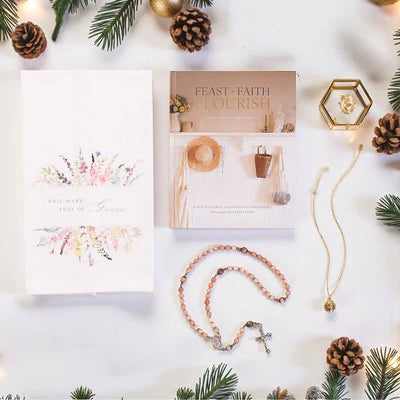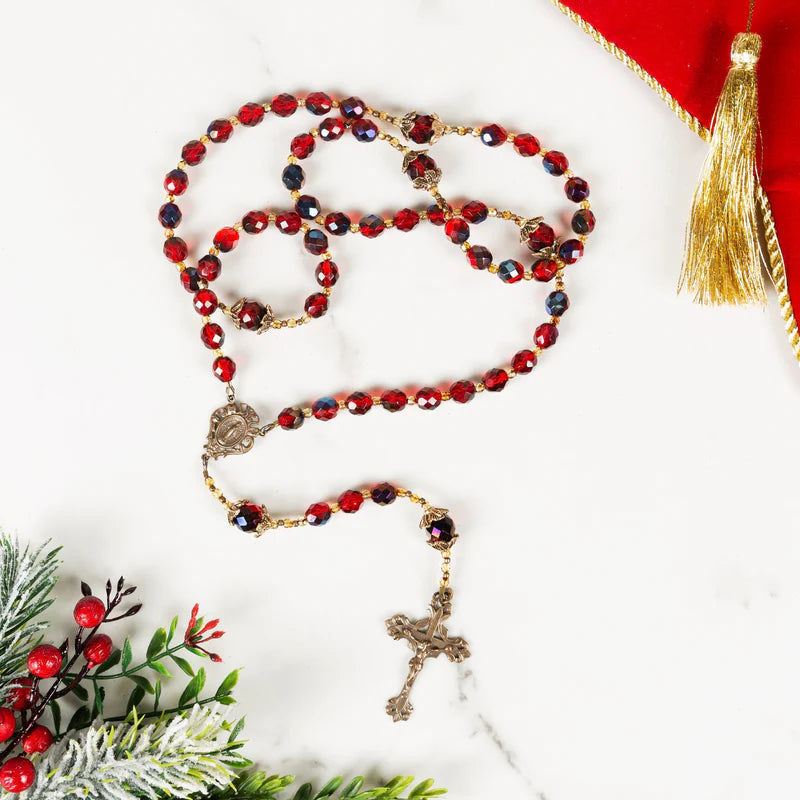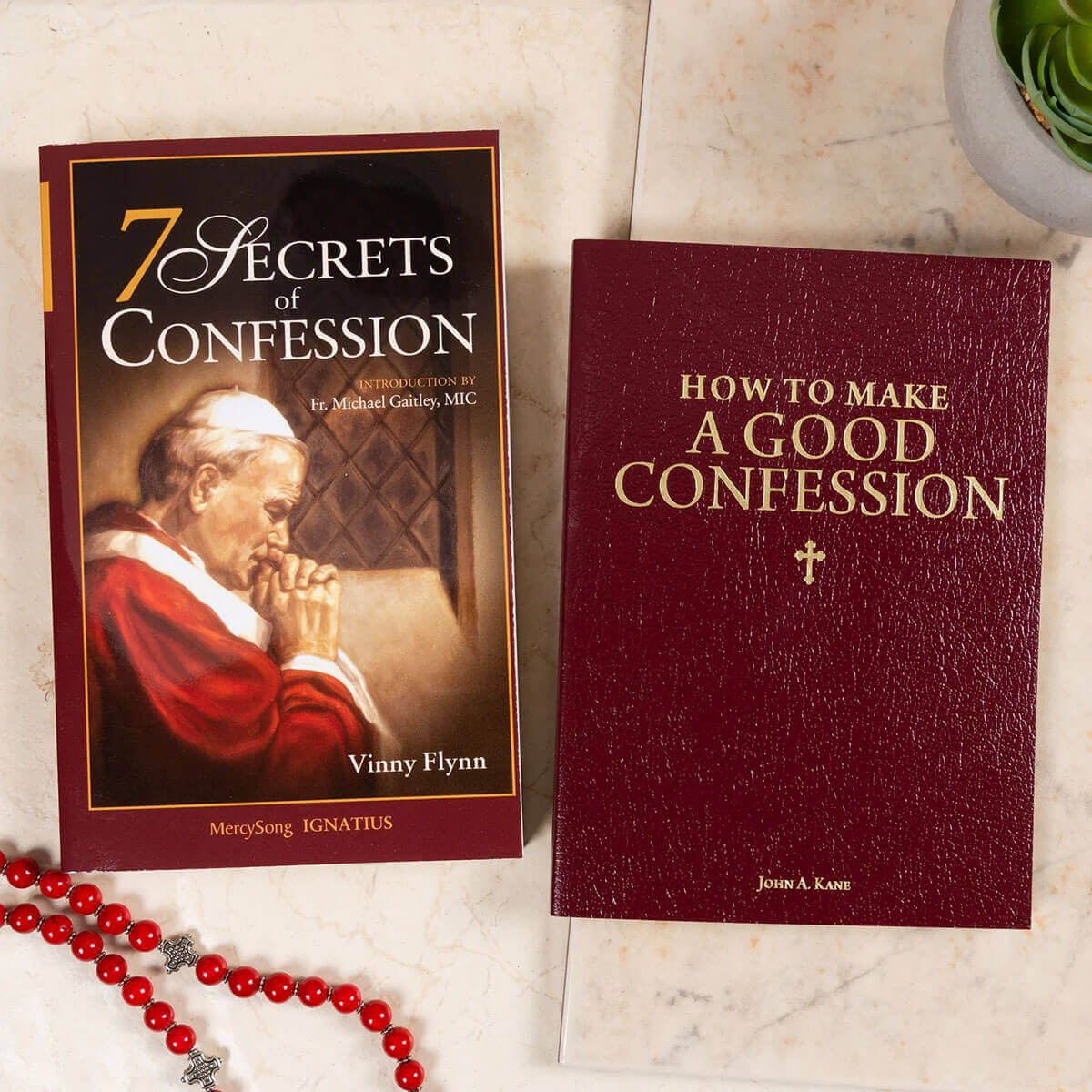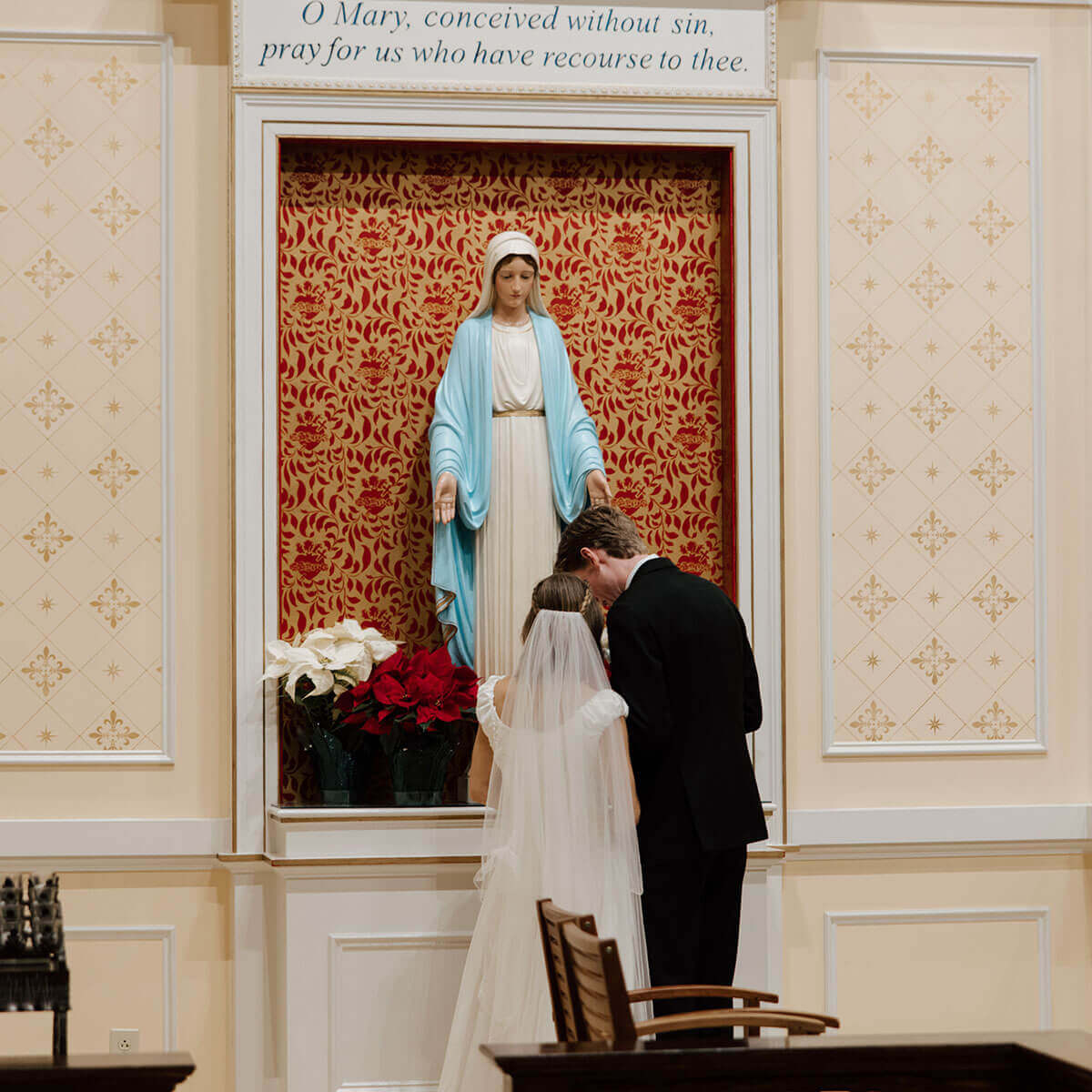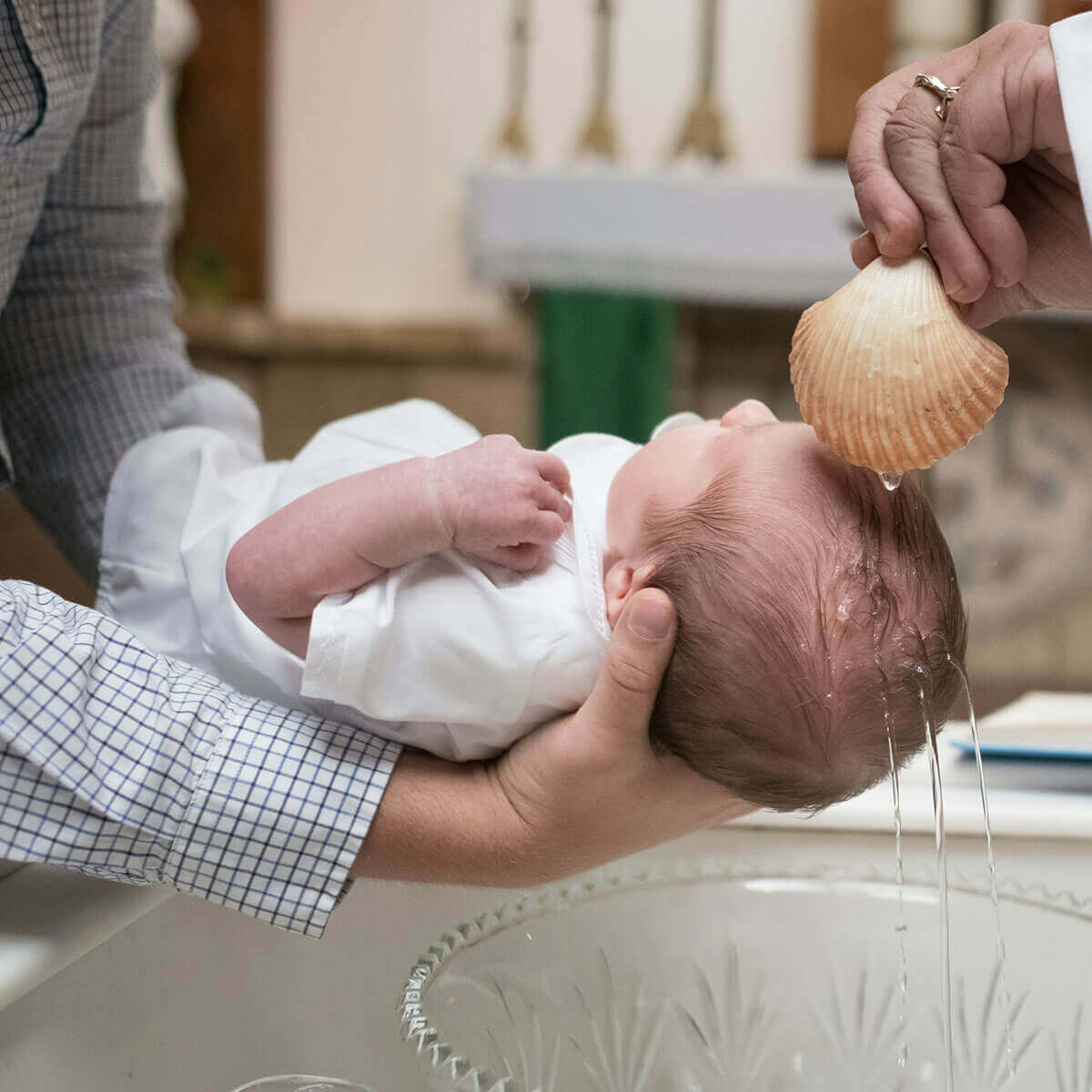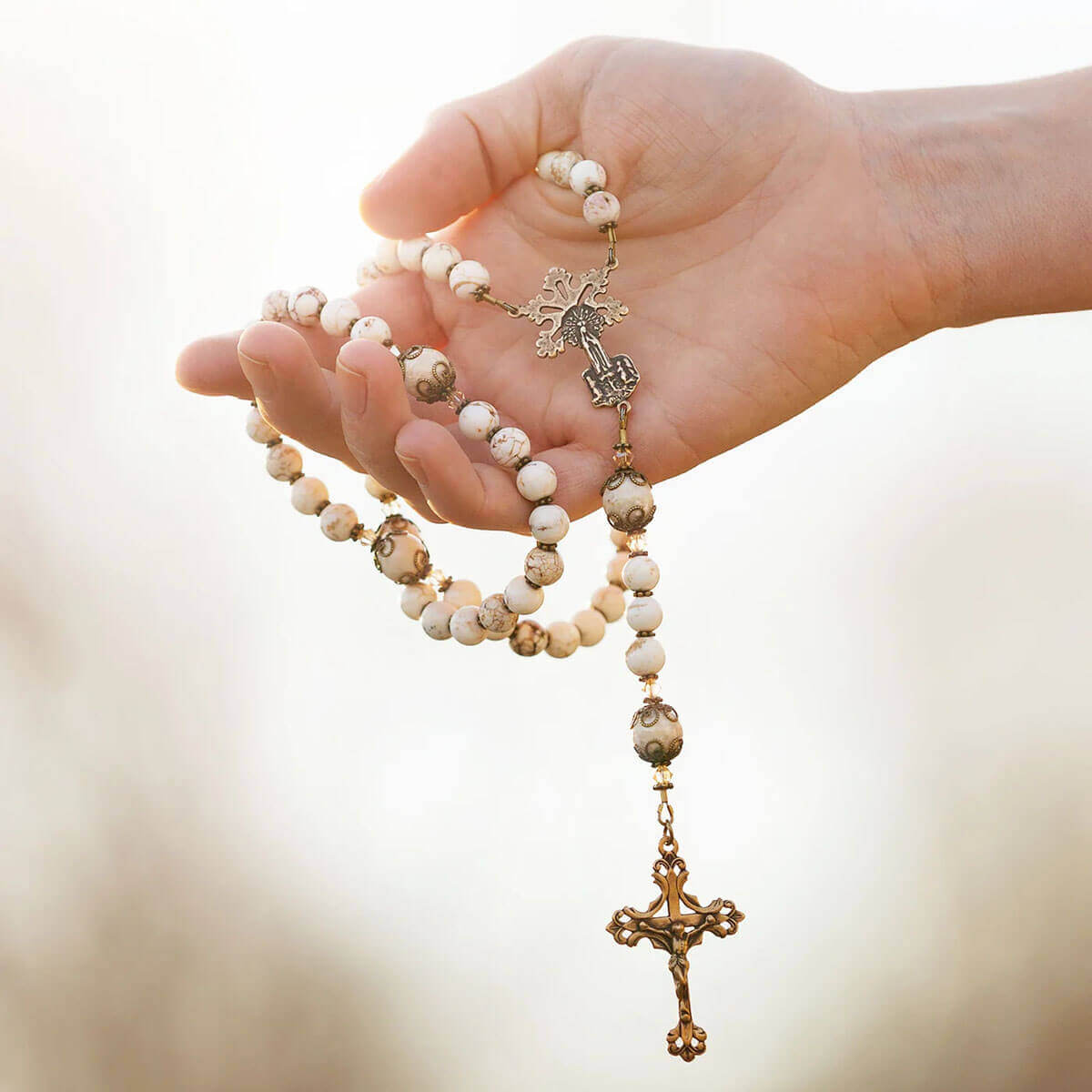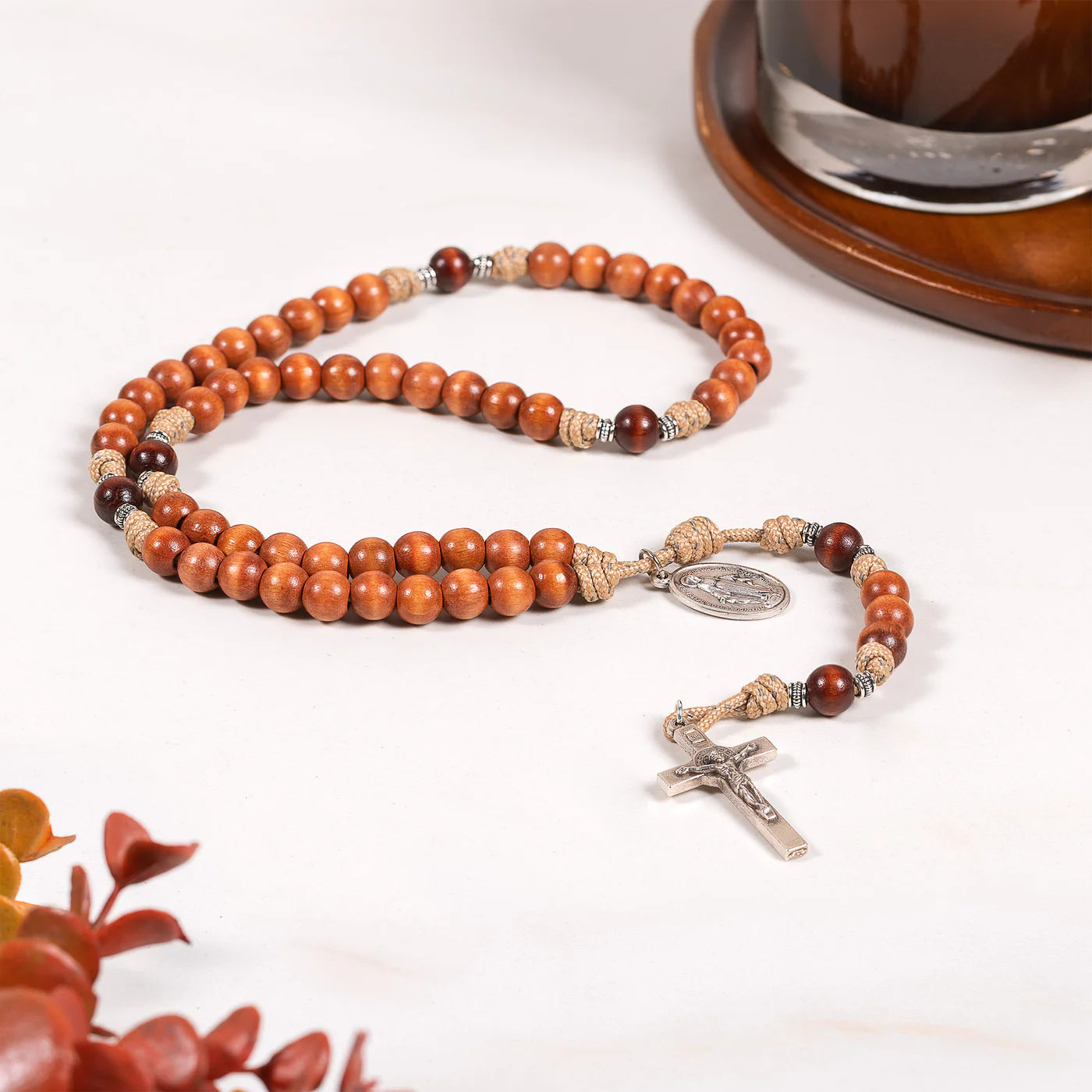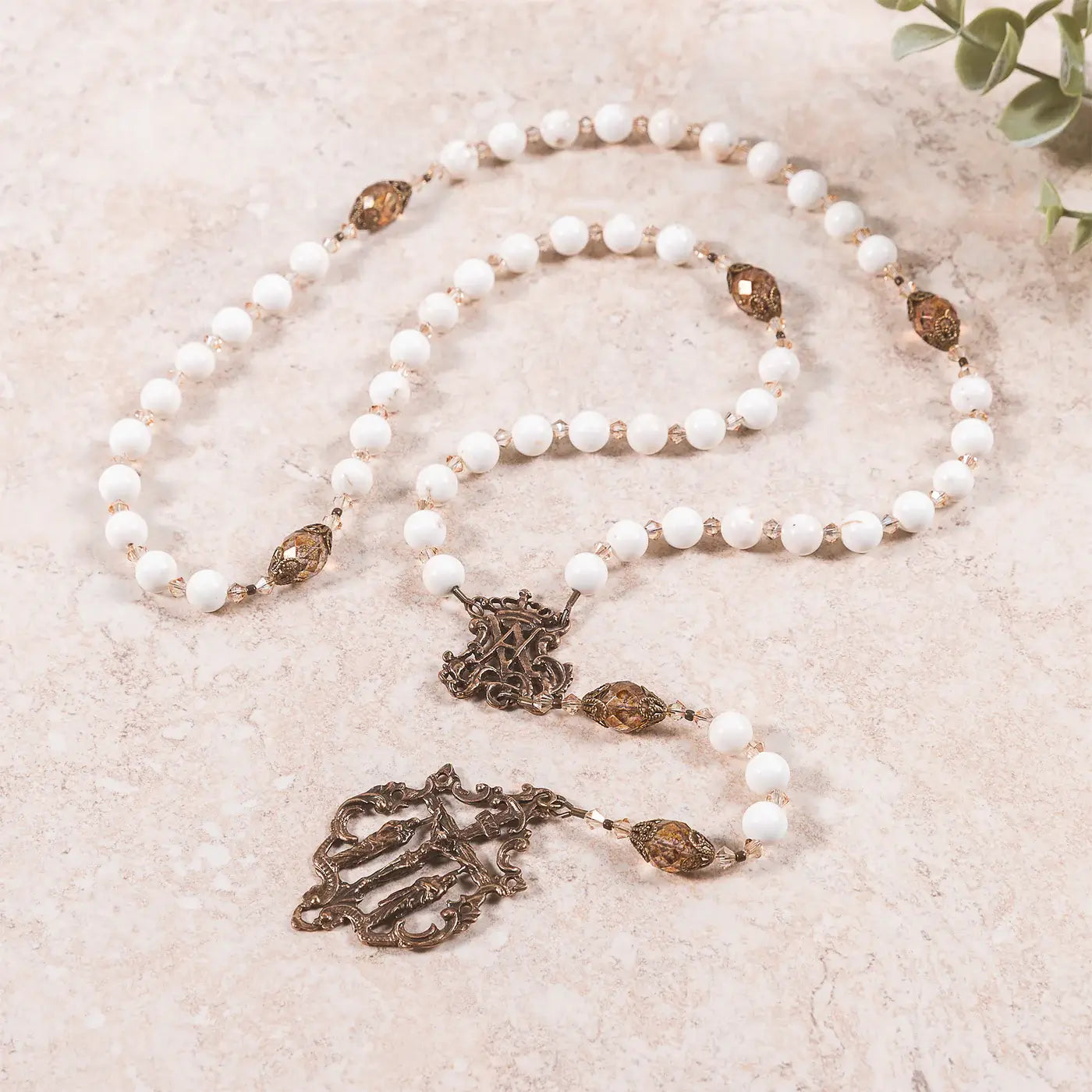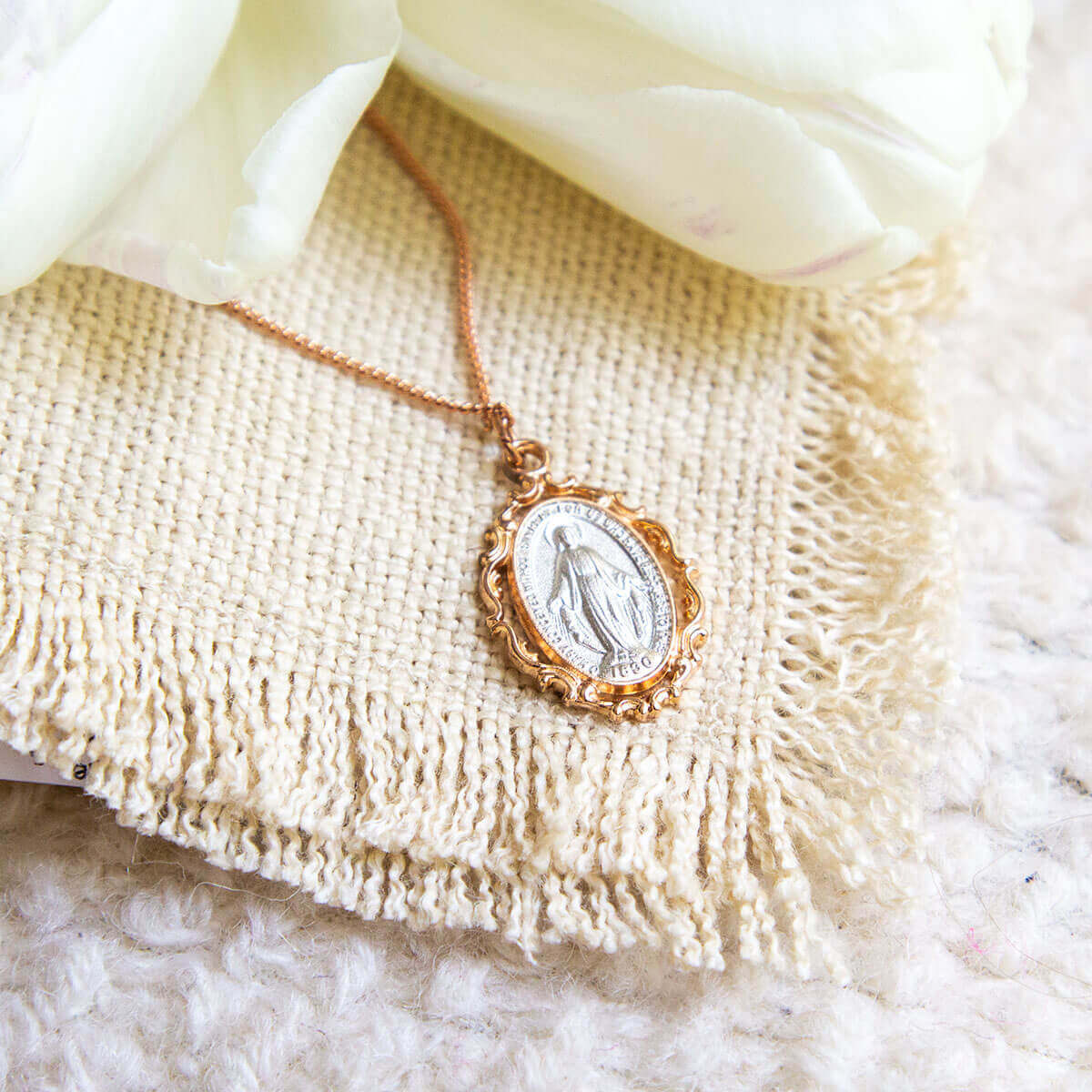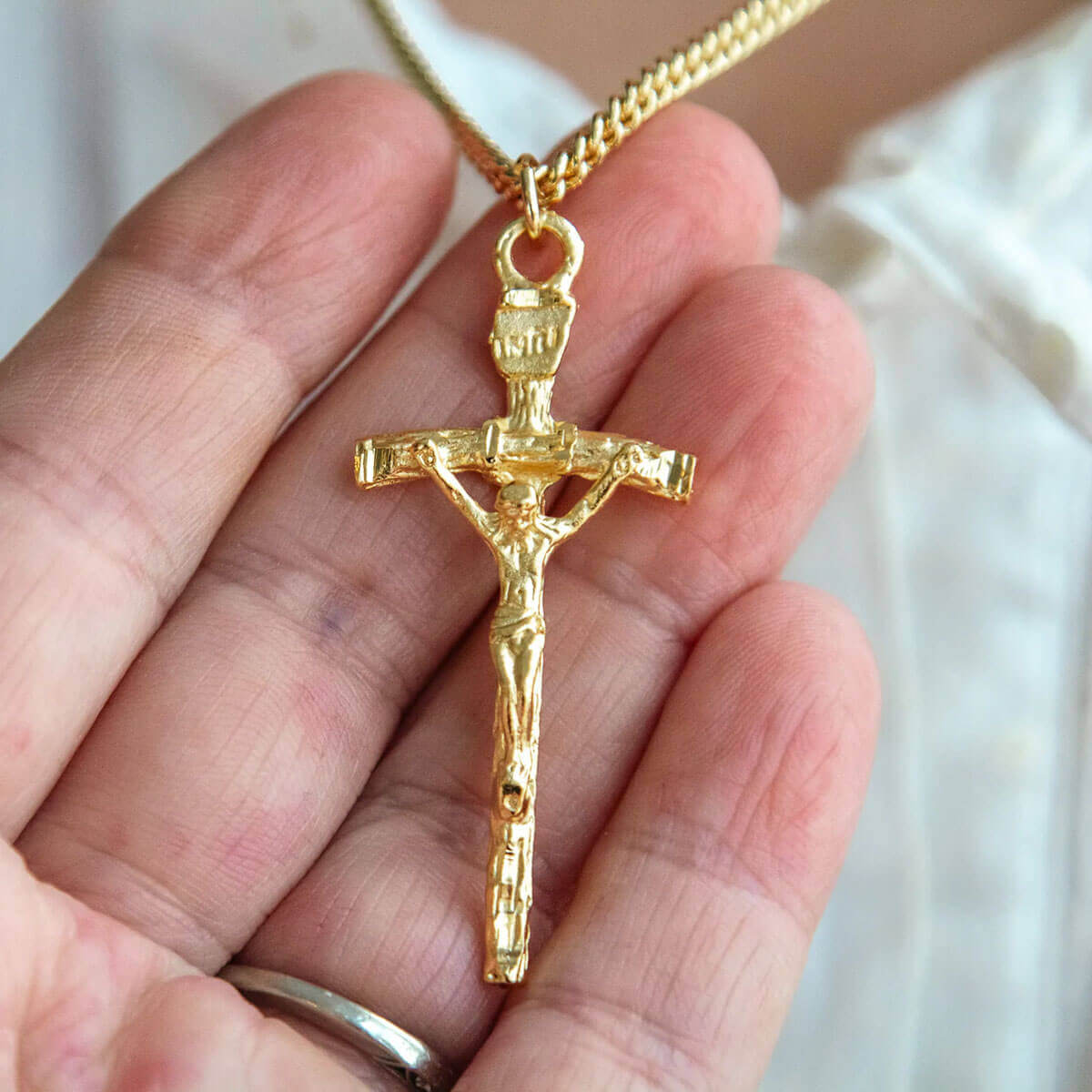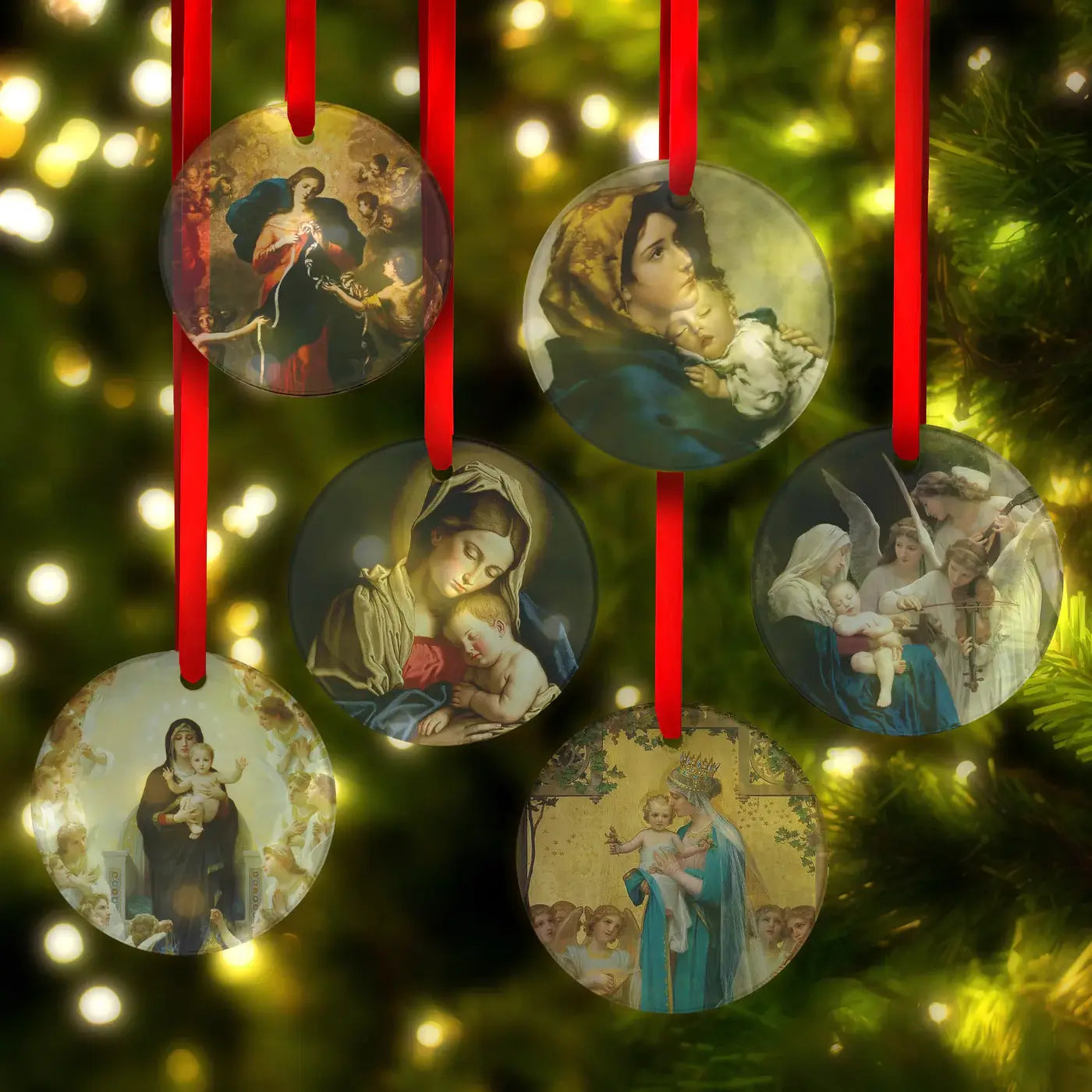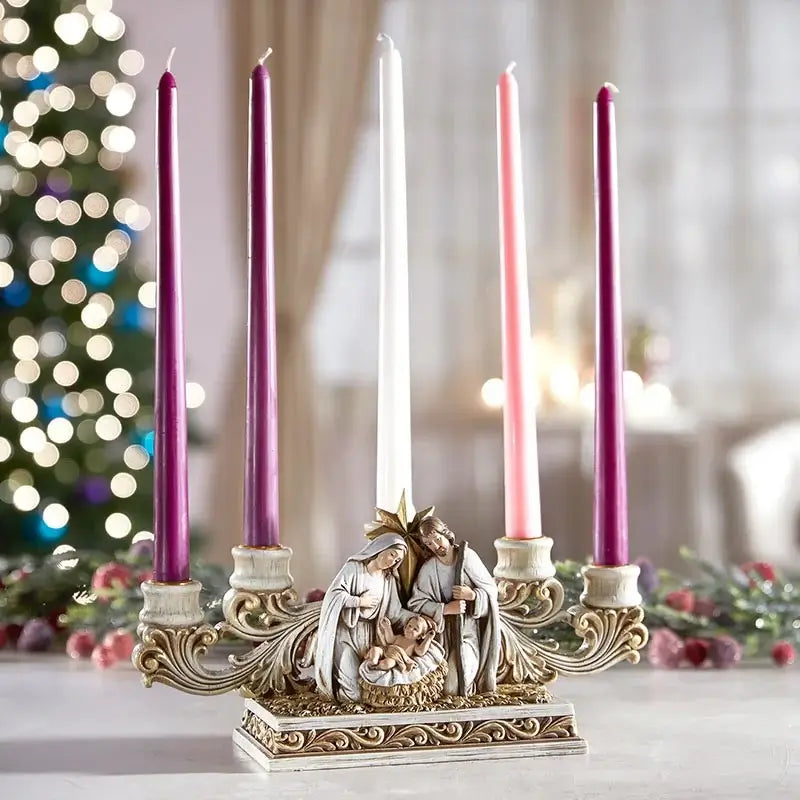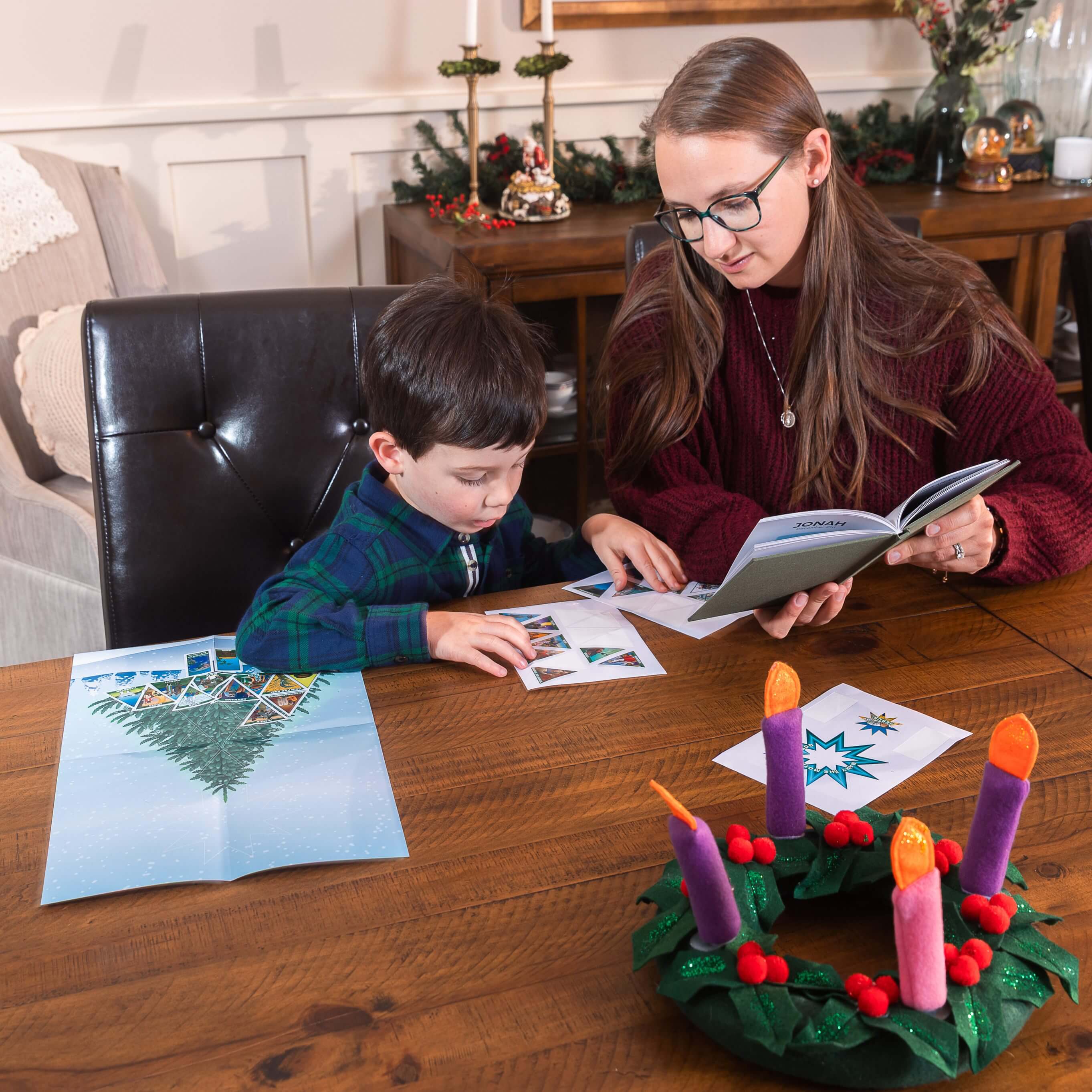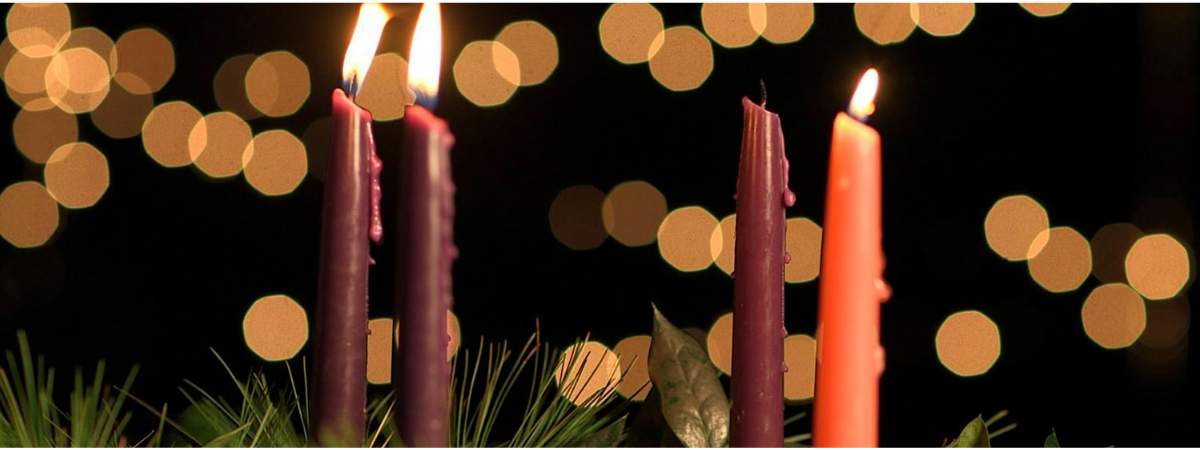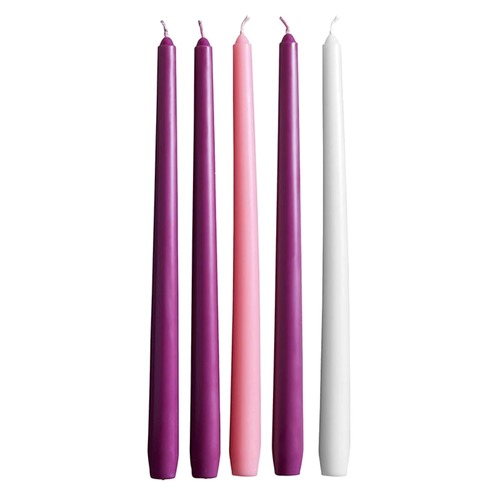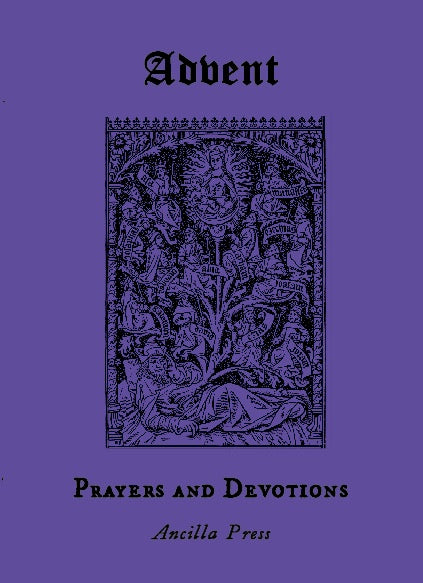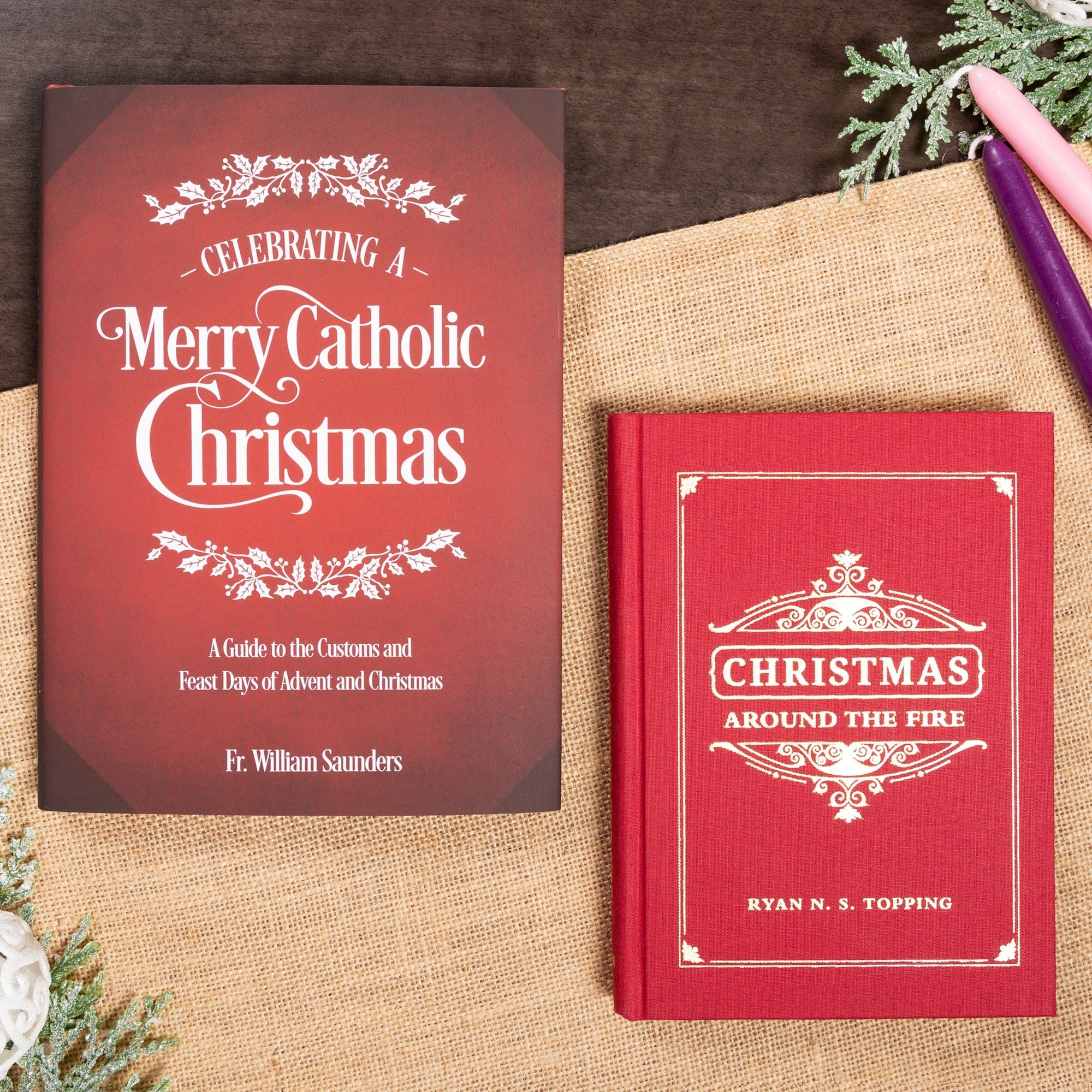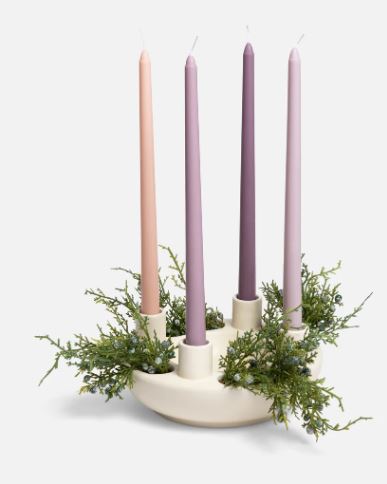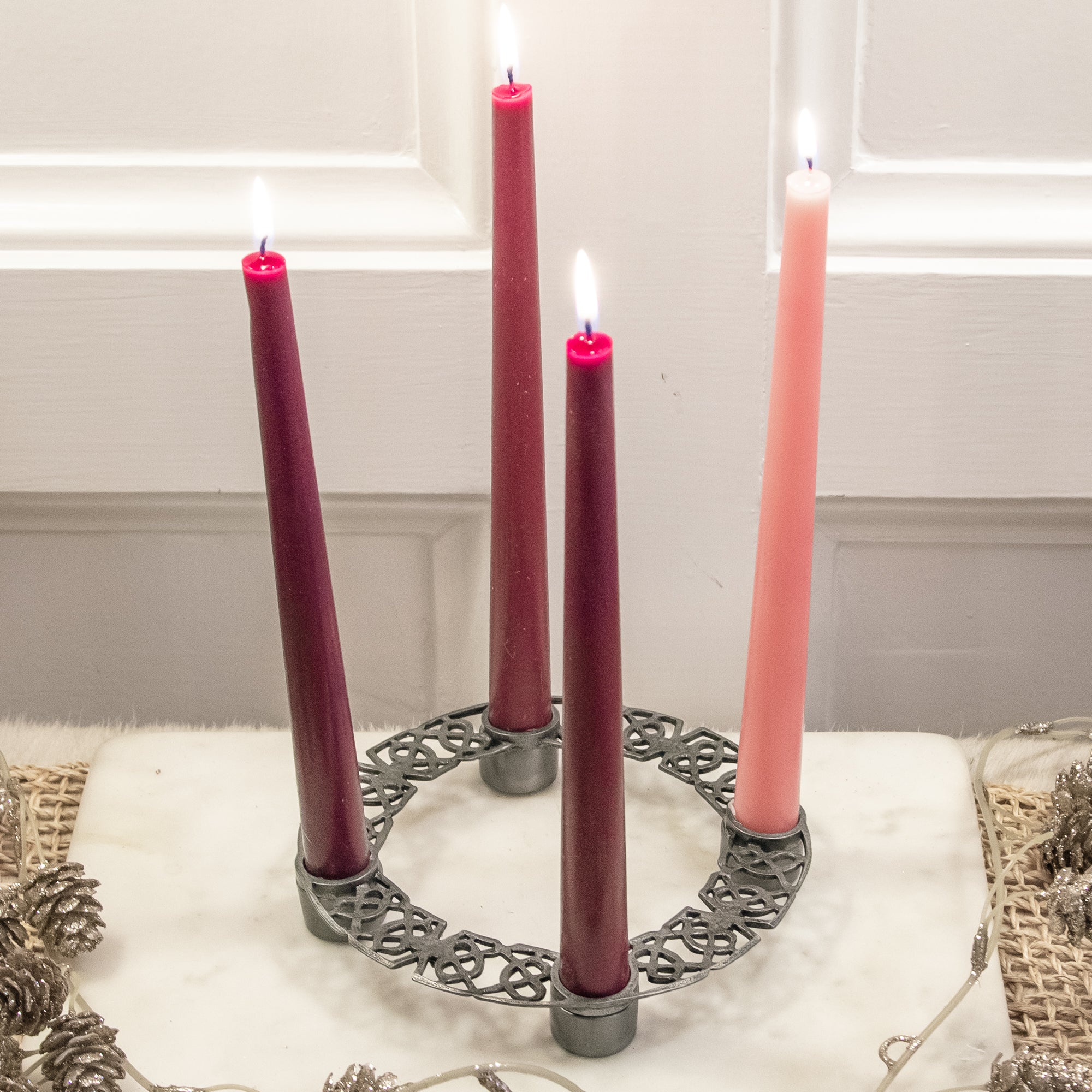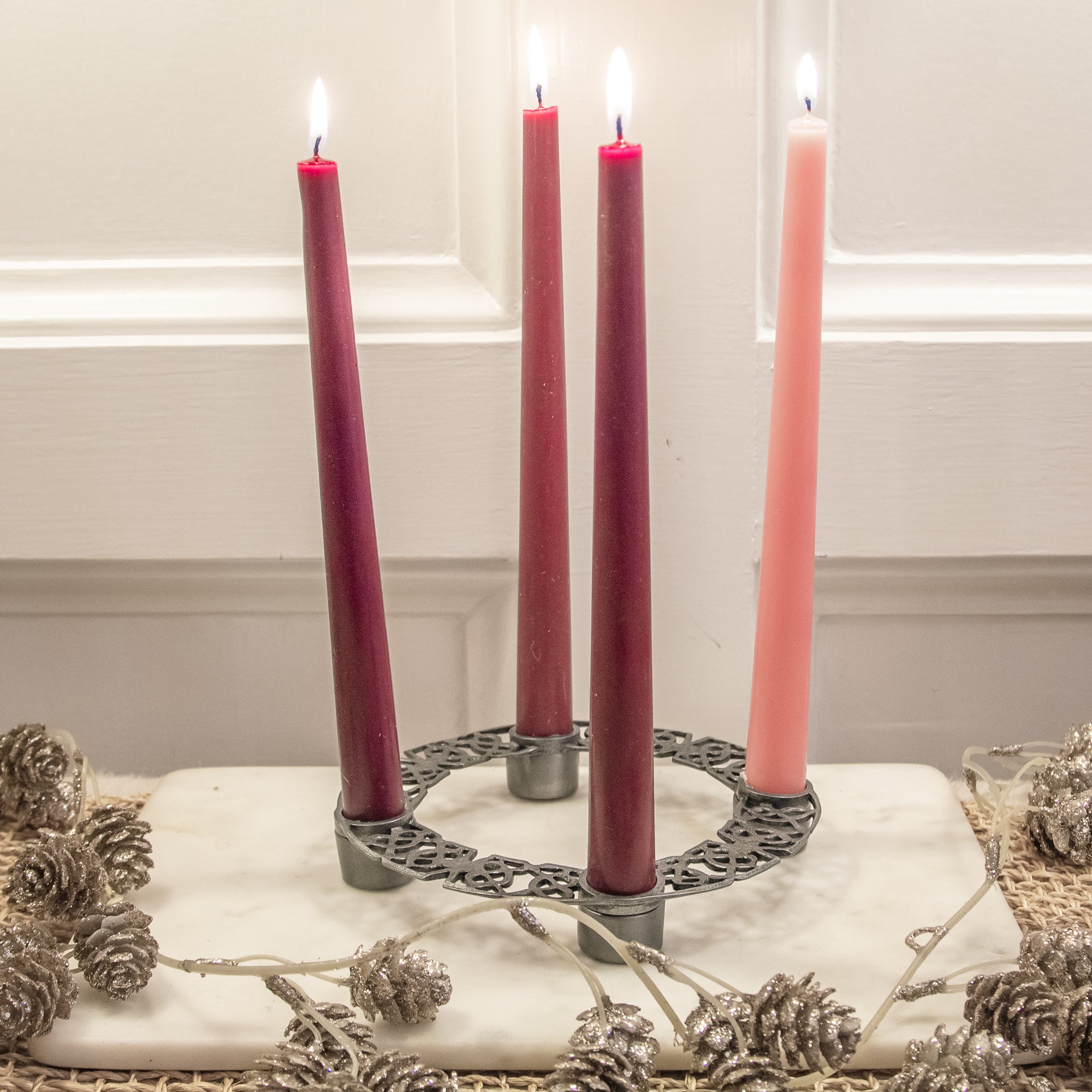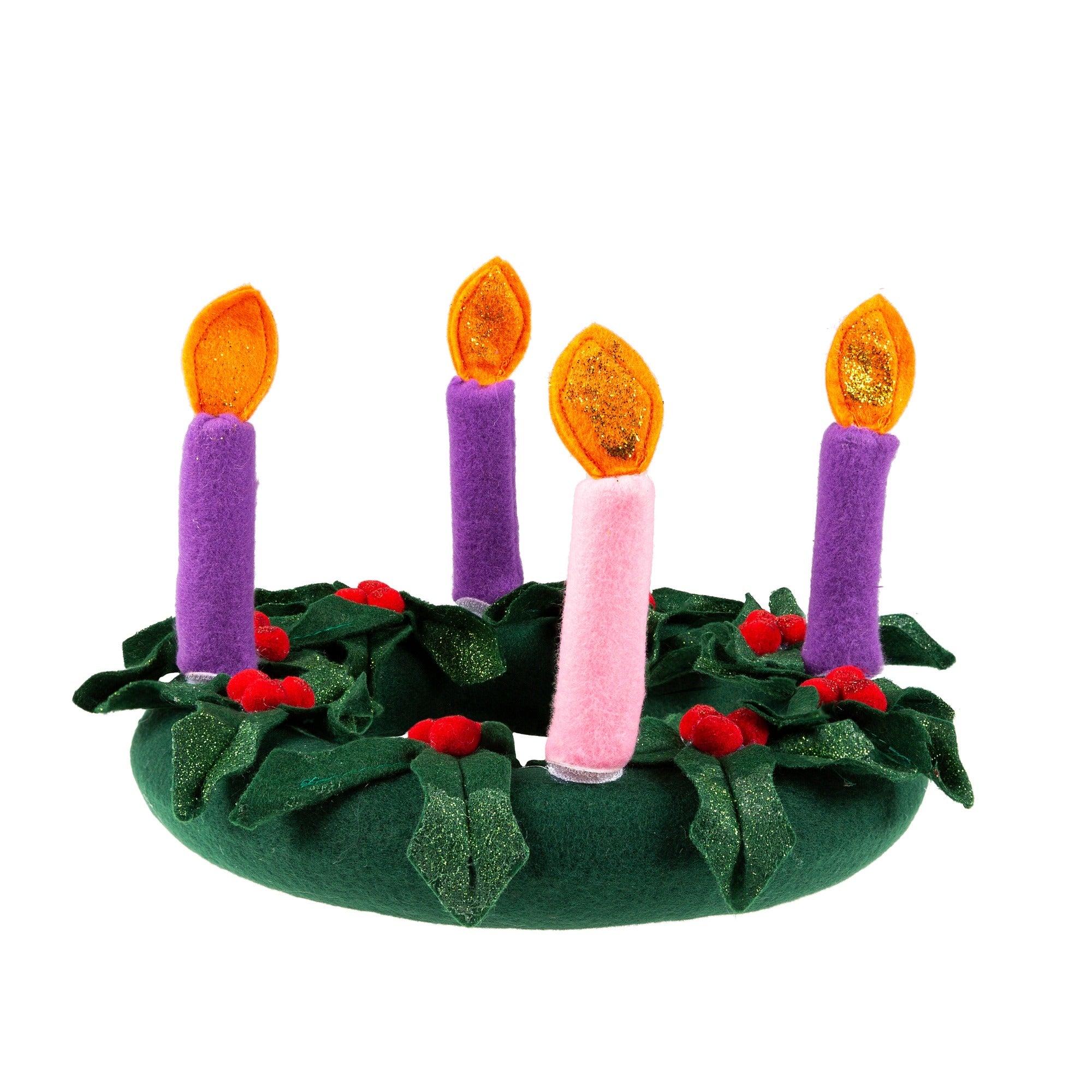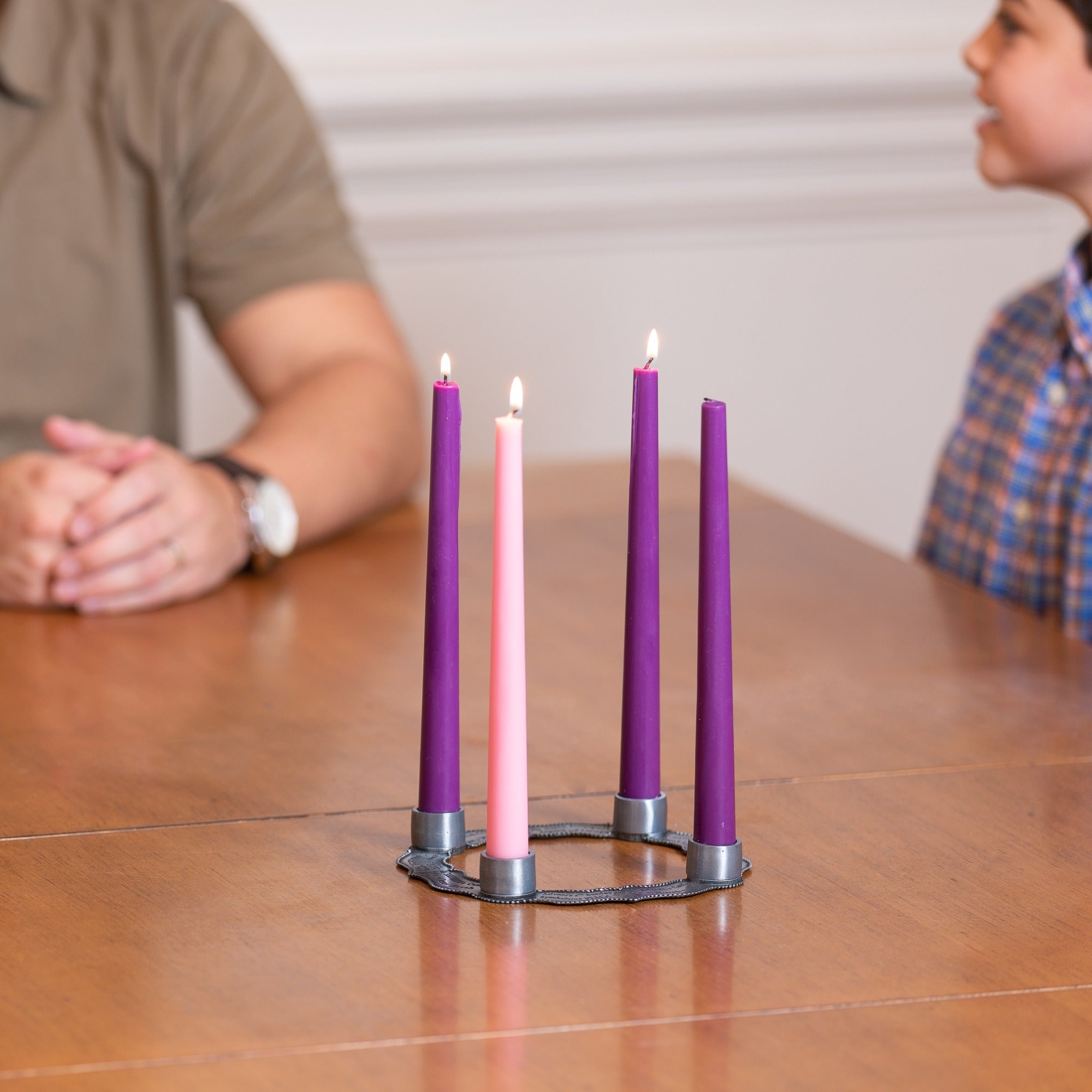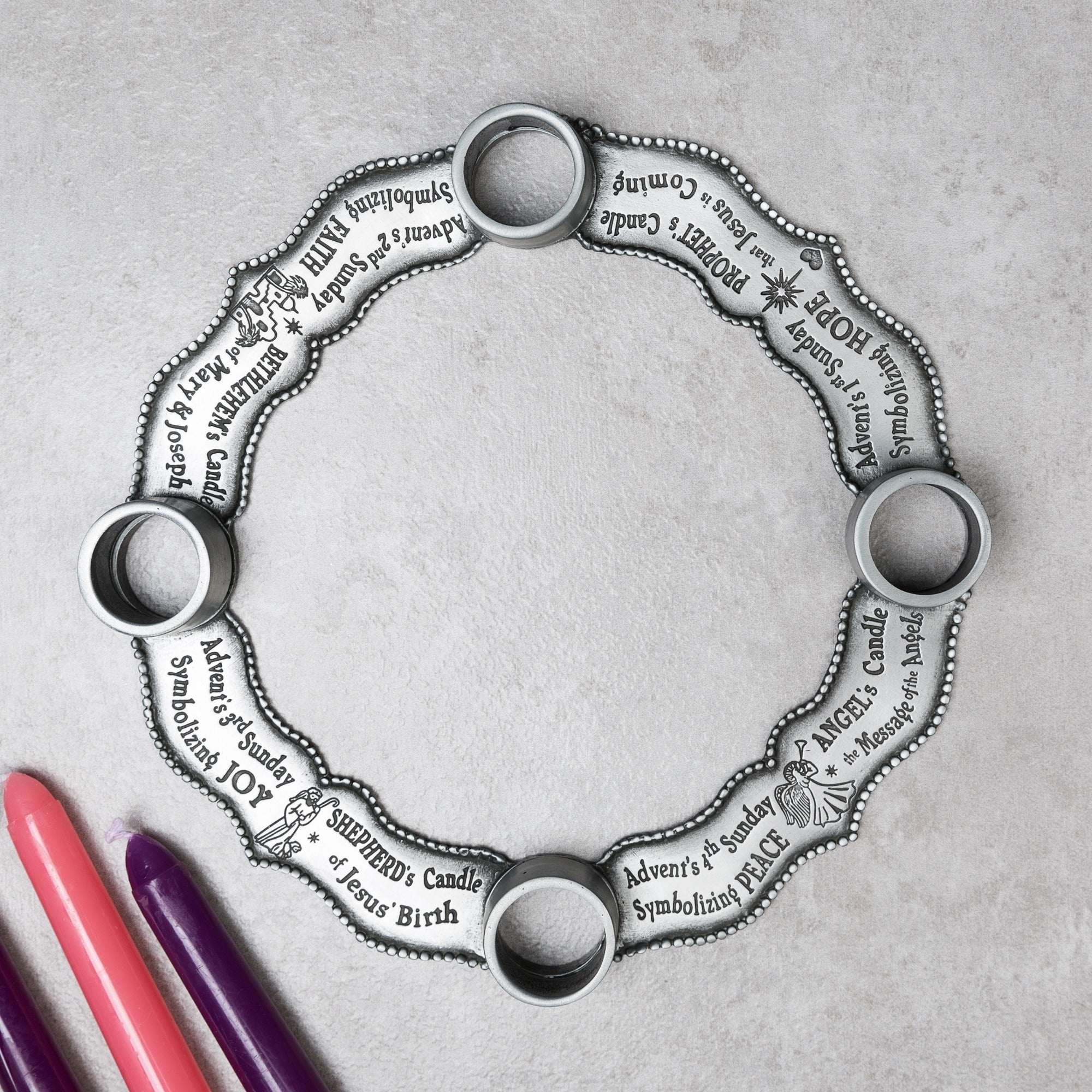While the exact origin of the Advent wreath is uncertain, one thing is undeniable: the use of this symbol is a longstanding tradition in our Christian faith, dating back to at least the 17th century.
As we progressively light the candles throughout the Advent season, we acknowledge God’s coming through reflection, prayer, and hope. We make our own private vigil while awaiting “The Light of the World.”
Not only do we recall His first coming, we also await His second coming, where He will judge the living and the dead.
Significance of the Advent Wreath Shape and Color
Since circles have no beginning and no end, the circular shape of the Advent Wreath symbolizes eternal life in Christ. The wreath holds four candles which are lit progressively, over the four weeks of the Advent season. Generally, three are violet (purple) and one is rose-colored, each representing 1,000 years. Added together, the four candles symbolize the 4,000 years that humanity waited for the Savior.
Violet is a liturgical color symbolizing penance, sacrifice, and prayer. During the first, second, and fourth weeks of Advent, we light violet candles as a reminder of the preparation of heart and mind undertaken in this season, which was traditionally known as a "little Lent."
The Third Sunday of Advent is called Gaudete (Rejoice) Sunday. On this day we celebrate that our wait is almost over. Since rose is the liturgical color used to signify joy, we light the rose candle on the third Sunday of Advent as we rejoice in anticipation of the coming of the Messiah.
White candles can also be used in place of colored candles. Many years ago, before colored candles were available, white ones were the ancient tradition.

Materials Used in the Advent Wreath
Advent wreaths were traditionally made of evergreen branches, which have long been a symbol of the constancy and faithfulness we aspire to as Christians. Evergreens flourish during every season, remaining unchanged through the harshness of winter. We are called to live our faith this same way—with holy confidence.
Holly, with its prickly leaves, represent the Crown of Thorns, and pinecones represent the Resurrection, because they contain the seeds of a new tree, and therefore of new life.
Contemporary style has given new interpretation to the wreath, and many artistic versions are made of other things besides evergreen branches.
From minimalist to traditional, from modern to sculptural, many other styles are available today without evergreen branches, but all are intended to convey the same spirit of anticipation, prayer, and waiting.
The Meaning of Each Candle
Each of the four candles on an Advent wreath has a specific meaning. The Joy, Faith, Hope, and Peace Advent Wreath illustrates this wonderfully.
The first Sunday of Advent symbolizes Hope, with the Prophet's Candle reminding us that Jesus is coming. The second Sunday symbolizes Faith, with the Bethlehem Candle reminding us of Mary and Joseph's journey to Bethlehem. The third Sunday symbolizes Joy, with the Shepherd's Candle reminding us of the Joy the world experienced at the birth of Jesus.
The fourth and final Sunday of Advent symbolizes Peace with the Angel's Candle reminding us of their message to all mankind, repeated in the Gloria at Holy Mass: "Peace on earth, good will toward men."
The Gift and Tradition of the Advent Wreath
The Church gives us this liturgical season so that we can prepare our hearts to receive Christ once again, in His coming at Christmas. We are also encouraged to reflect upon our lives in anticipation of His second coming, at the end of time.
The Advent Wreath is a beautiful way to enter into reflection alone or with your family. Slowing down during the hectic rush of the season and bringing family together nightly around the wreath can be a source of peace, grace, and blessings shared with one another, and with Christians throughout time.
Do you have an Advent wreath? What's your favorite thing or memory about this tradition?

